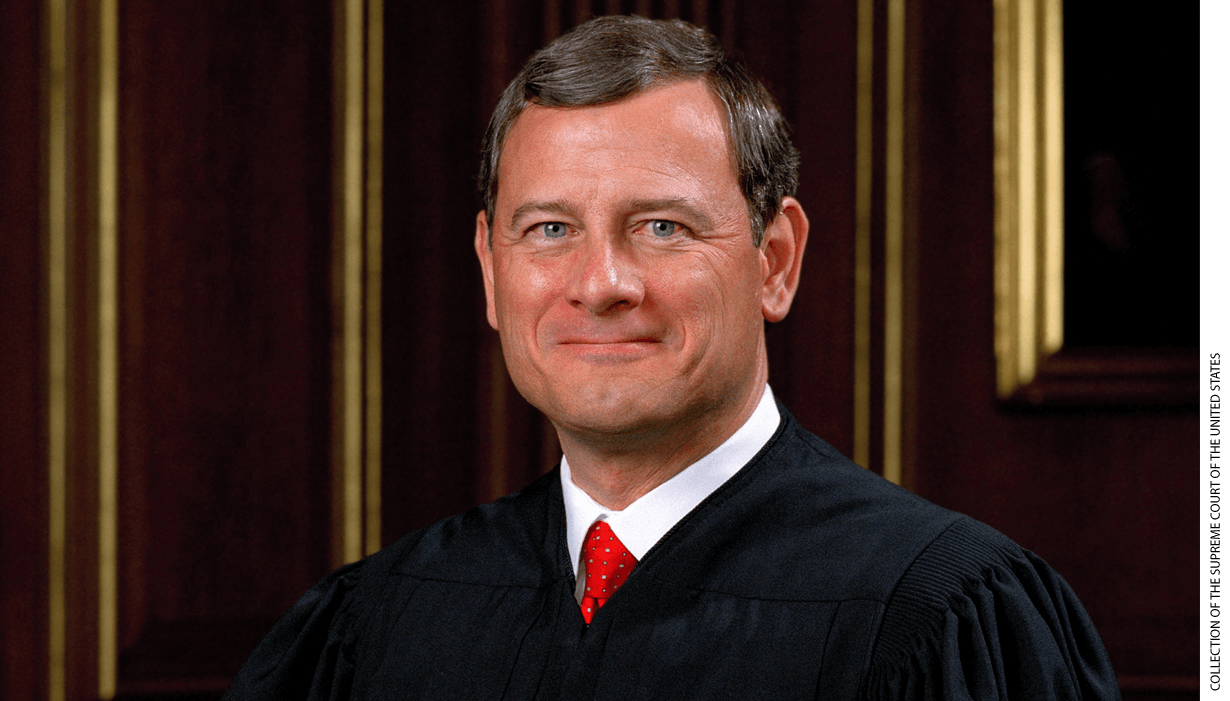
The Supreme Court’s decision siding with religious-school parents in Espinoza v. Montana Department of Revenue will have implications far beyond Montana. Though the court did not explicitly say so, its decision effectively struck down Blaine Amendments, provisions in 38 state constitutions forbidding aid to religious institutions. If the narrow 5-4 majority of the Espinoza decision remains intact, the case will be both one of the most significant religious liberty and education decisions in decades.
As we reported earlier (“Answered Prayer,” Fall 2019), Espinoza v. Montana Department of Revenue arose when Montana officials eliminated a tax-credit scholarship program because it allowed religious schools to participate. The state had invoked its Blaine Amendment to justify its decision. The Supreme Court explicitly ruled that decision singled out religious parents, including Kendra Espinoza, and schools for punishment solely because of their religious status. Relying on the opinion he wrote for the court just three years ago in Trinity Lutheran Church v. Comer, Chief Justice Roberts ruled that Montana’s “no-aid provision penalizes” families that choose to send their children to religious schools “by cutting [them] off from otherwise available benefits” rendering that application of the clause unconstitutional. The chief justice, you could say, finally ran out of his minimalist patience. All Montana would have had to do avoid this decision was read his opinion in Trinity Lutheran.
While there might be some zombie elements of Blaine Amendments that survive this reasoning, it’s not clear what they would be and what force they would have. For instance, Trinity Lutheran relied on a distinction between religious use and religious status. That distinction seemed strained and unlikely to last. The court did not have to address whether it should maintain it since this case clearly based on religious status. Even more telling is that the dissenters thought this was a death blow against Blaine Amendments indicating that there’s almost nothing left of them now. Justice Ginsburg flatly stated that “By urging that it is impossible to apply the no-aid provision in harmony with the Free Exercise Clause, the Court seems to treat the no-aid provision itself as unconstitutional.”
At least some of the others in the majority would be willing to go even farther. Justice Thomas, joined by Justice Gorsuch, argued that the court’s reading of the Establishment Clause had distorted its interpretation of the Free Exercise Clause, unconstitutionally limiting the rights of religious believers. Thomas pointed out that when the Establishment Clause was written it was designed to protect official state churches from having a national established church imposed on them. Thus, it is not clear that it should restrict states at all. But if it does, at most, he argued, all it should do now with its incorporation via the Fourteenth Amendment is forbid official state churches. But now states use the clause to infringe on the free exercise of religion. In short, proper protection of free exercise requires a proper interpretation of the Establishment Clause.
Justice Alito concurred but to point out the explicitly discriminatory origins and contemporary operation of Blaine Amendments. Defenders of Blaine Amendments have argued that their sordid discriminatory motivations does not mean that they are discriminatory today. Montana, for instance, had revised its constitution in 1970 allegedly purging the Amendment of odious past. Alito pointed out that that does not matter because it still has its “originally intended” discriminatory effect.
The long-term consequences of this decision may hinge on the definition of the “otherwise available benefits” mentioned in the opinion. Justice Breyer’s dissent sees the court’s reasoning as having far reaching effects. Despite Chief Justice Robert’s claim that “a State need not subsidize private education,” Breyer writes that the ruling will require states to subsidize private education. It’s hard to see how he is wrong, though it’s possible that states will attempt to defend a distinction between a service directly provided by a government-run school and one provided by a private school, religious or non-religious. Breyer asks, “If making scholarships available to only secular nonpublic schools exerts ‘coercive’ pressure on parents whose faith impels them to enroll their children in religious schools, then how is a State’s decision to fund only secular public schools any less coercive?”

Or, Breyer asks, “What about charter schools? States vary widely in how they permit charter schools to be structured, funded, and controlled. How would the majority’s rule distinguish between those States in which support for charter schools is akin to public school funding and those in which it triggers a constitutional obligation to fund private religious schools?” In the end, the court’s reasoning could compel states to fund not just religious schools but religious charter schools as well if education itself is construed as the “otherwise available benefit.” Breyer and the other dissenters will have to pin their hopes on the chief justice being willing to draw an arbitrary line limiting the reach of his analysis. Given some of his other decisions this term that hope might be a reasonable one.
For advocates of equal funding of education regardless of whether it’s public or private, this will go down as a landmark decision. States can no longer rely on their Blaine Amendments when categorically excluding religious believers and institutions from state benefits. This decision could also compel the states to expand those benefits to religious believers and institutions well beyond Kendra Espinoza and the Stillwater Christian School of Kalispell, Montana.
Joshua Dunn is professor of political science and director of the Center for the Study of Government and the Individual at the University of Colorado Colorado Springs.
Earlier Education Next coverage of the Espinoza v. Montana Department of Revenue case:
• EdNext Podcast with Marty West and Joshua Dunn, January 23, 2020: Supreme Court Hears Oral Arguments in Espinoza v. Montana.
• Burying Blaine, January 22, 2020, by Joshua Dunn, reporting on the oral arguments in the case.
• In the News, January 22, 2020, with a link to the transcript of the oral arguments in the case.
• What About the Non-Graybill Students?, a blog post by Ira Stoll, January 16, 2020
• Education Exchange Podcast with Paul Peterson and Institute for Justice lawyer Erica Smith: Building a Case Against the Blaine Amendments, December 2, 2019
• Education Exchange Podcast with Paul Peterson and Espinoza case lawyer Richard Komer: School Choice and Blaine Amendments in Montana, November 4, 2019
• Answered Prayer? Montana case could prompt last judgment for Blaine Amendments by Joshua Dunn, Fall 2019
This article appeared in the Fall 2020 issue of Education Next. Suggested citation format:
Dunn, J. (2020). In Supreme Court Case, a Far-Reaching Win for Religious-School Parents: Espinoza v. Montana may pave way for more direct funding of religious schools. Education Next, 20(4), 6-7.


